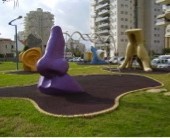
Abstract: Recent sustainability education theorists have identified a gap in the research literature regarding sensory entanglement and wonder in sustainability education. Sensory entanglement and wonder are requisite because they bring valuable shifts supporting a more critical and transformative kind of sustainability education by (1) awakening a compassionate connection with the living world, (2) nurturing alternative epistemologies, (3) providing a strengthening function for sustainability educators and their co-learners, for stamina and ongoing engagement, and (4) generating sustainability agency and an active and authentic hope to sustain a sense of the possible in the midst of the dire. This article focuses on how awakening the senses to foster a sense of wonder can nurture grounded, authentic, active hope and agency in sustainability education. It is authored collaboratively by sixteen graduate course participants and faculty co-researchers who discuss interrelated theories pointing to a need to foster senses of wonder in sustainability education. The researchers work in research teams to explore experiential and sense-based hope- and agency-building curricula. Findings include activities and reflections across the five senses as well as with the sixth sense, intuition. Sensing, listening, intimate observing, imagining, feeling, entangling, and wondering can shift unsustainability epistemologies and transform human and cultural engagement. The sense of sound can be immersive and resonant, lending learners to relational and multispecies sensing. Scent can catalyze wonder and inspire experiential, holistic growth and integration of time. Savoring in the sense of taste can extend learners from survival to joy, offering opportunities for mindfulness that can connect cultural and biocultural mutualisms and collaborative sustainability agencies. Pattern sensing for similarity using the visual sense of wonder can support connected knowing and ecological vision. The sense of touch can offer a continuous and mutual comfort and belonging. Visual pattern and texture scavenger hunts can cultivate these sustainability sense capacities. The sixth sense, intuition, opens learners to imaginative, transformative, and connective ways of knowing as place and planet, stimulating hope-giving, integrative sustainability agencies.
Continue Reading